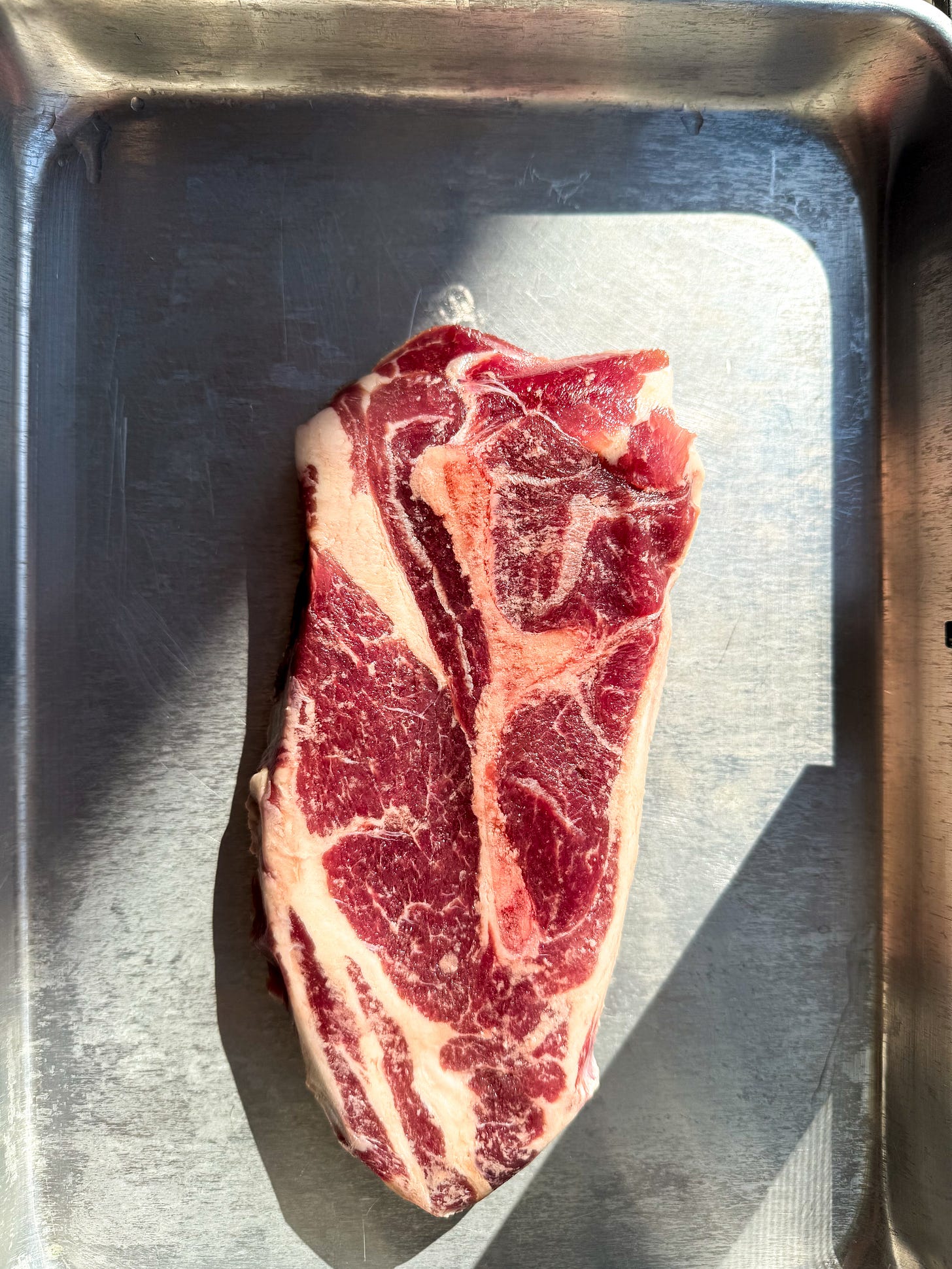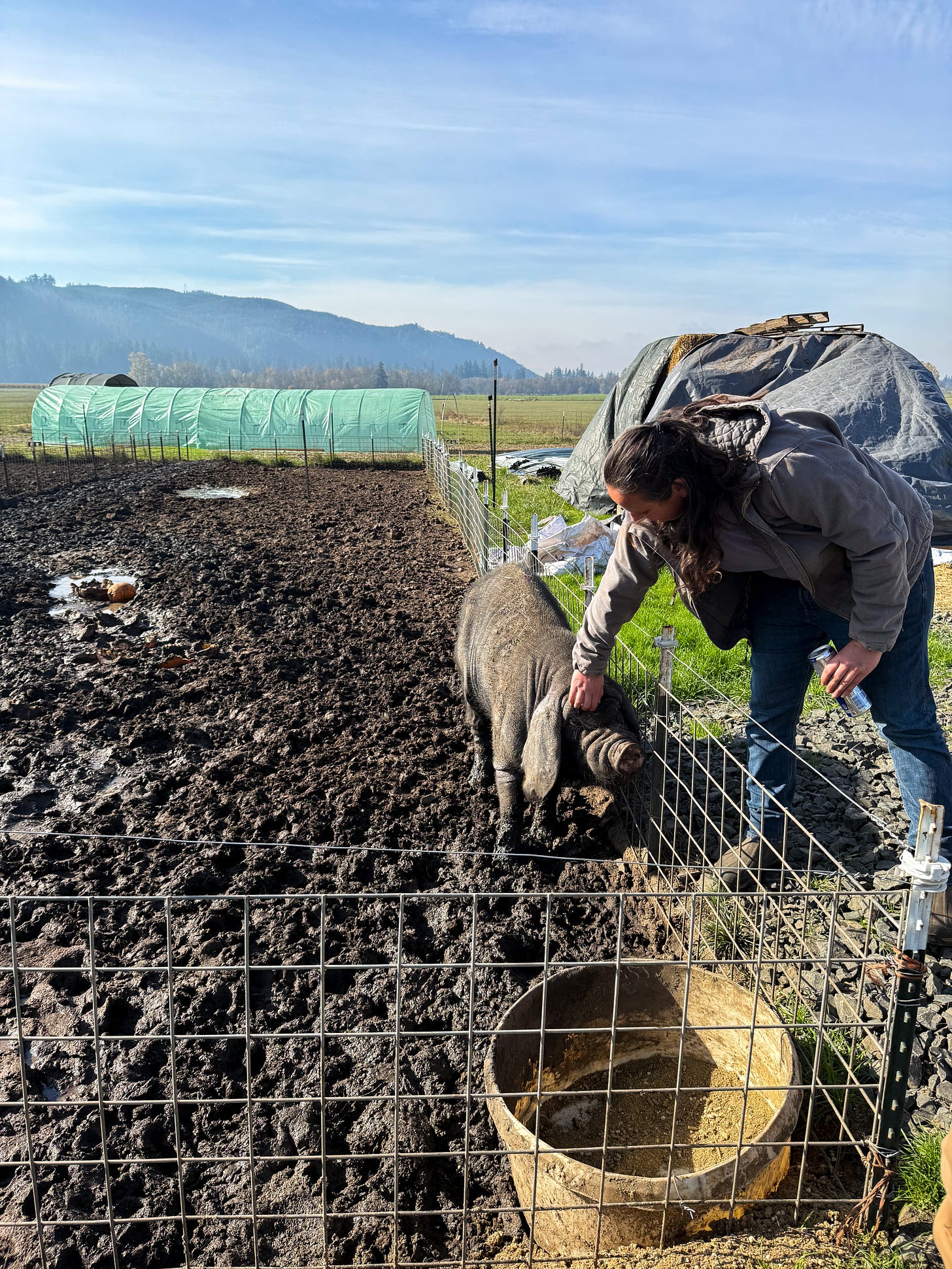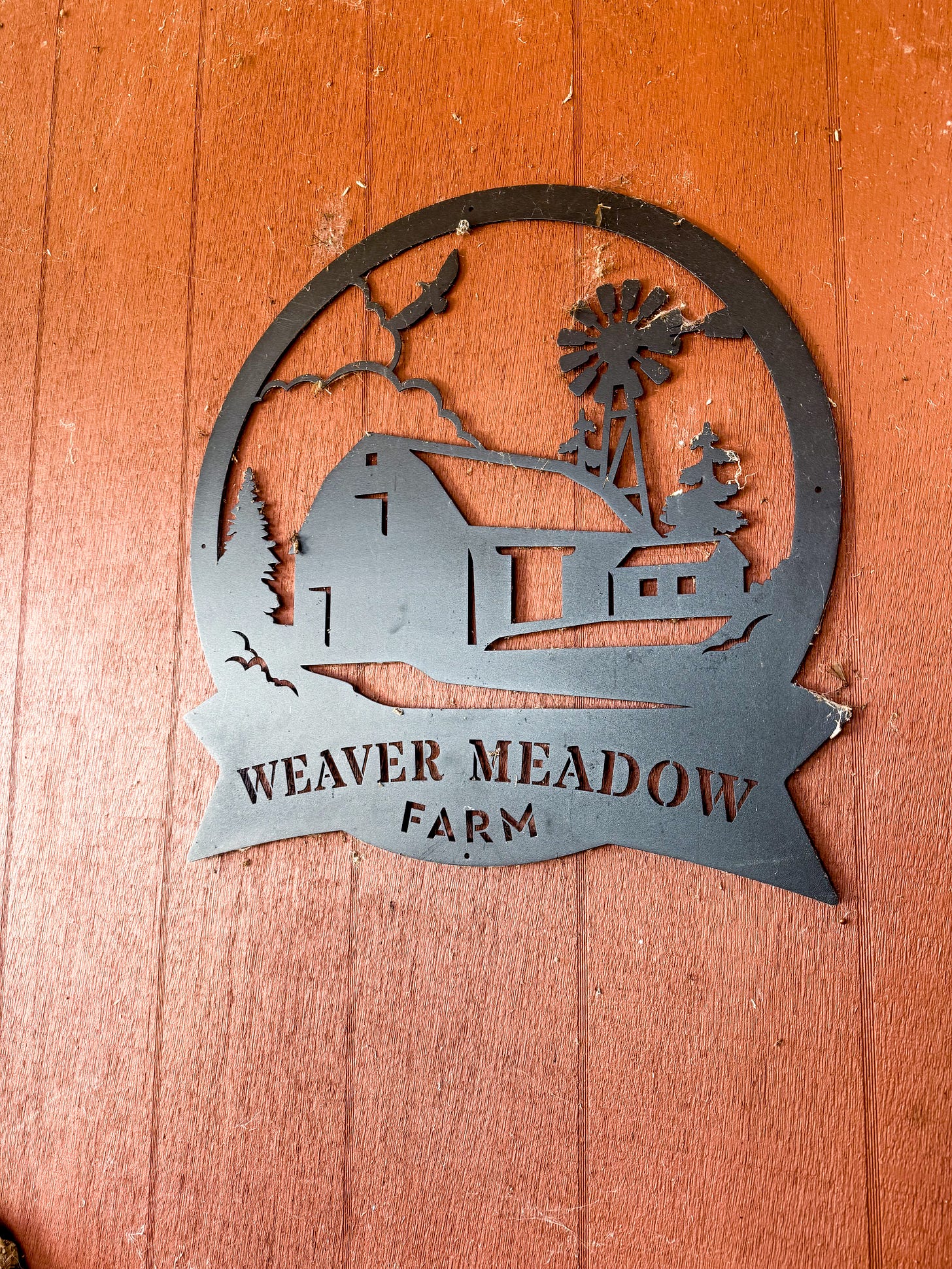We were initially drawn to this ancient Chinese pig’s appearance on paper— the ability to produce high volumes of healthy fats, iron-rich ruby meat, and nuances that indicate the land it inhabited. And what initially drew us to visit Weaver Meadow Farm, were the other aspects not easily conveyed through white papers— strolling the grounds, and meeting the loving hands that are responsible for nourishing and nurturing the storied Meishan.
The Meishan pig’s genetic tendencies, combined with the farming practices we got to witness with Megan and Ry, show Weaver Meadow Farm’s Meishan transcend that which can be written on paper.
Feed
When one door closes, another opens— Megan Weaver revealed a serendipitous change in grain supplier gave her the push she needed to take matters into her own hands and forge her own blend of feed, optimized for increased production of oxidative muscle tissue (red meat) and IMF (intramuscular fat).
Weaver Meadow Farm’s Meishan enjoy a diet based on 25% grain, alfalfa, grass screenings, pig growers blend of minerals and vitamins, peas, moringa leaf powder— all loaded and mixed via cement mixer to meet the scale and demand of the hungry herd of more than 100.
There is no finishing program1 for Megan’s Meishan. She firmly believes her pigs are fed the highest quality feed their entire lives, therefore not required any modifications to diet prior to butchering.
Terroir
When we chatted with Jonathan Kemmerer, he validated the concept of terroir in the world of pork. Megan’s Meishan grazing on the grass in Brownsville, OR will have a quality distinctive of the Pacific Northwest.
Our visit to Brownsville missed a passing rainstorm by mere hours. The amount of muddy land at the farm was relatively minimal given the downpour. Instead, lush grass and structured soil indicated the Meishan were thriving as natural surface grazers. Meishans’ ability to be satiated on the grass above the soil means the root structure survives and replenishes within days. This ultimately requires less land, lower maintenance, and less stress physically and financially for the farm.

Much of the Meishan’s grazing happens on flat land, conducive to low energy exercise which further promotes the natural affinity for higher volumes of IMF. In contrast, a few Meishan on the property spend time on a hill. These pigs expend slightly more energy as their spatial roaming requires additional physical expenditure.
Similar to the impact of soils in growing grapes for wine, we noticed the Meishan living on this slight incline appeared to be leaner in their development.
Docility
Meishan are considered an approachable pig for farmers, no matter the tenure. The fact that humans, adults and children alike, can be in close proximity to feed and care for them is an incredible upside. Most of the Meishan breeding stock2 we met that day were in midst of a midday nap. Each one groggily and enthusiastically awoke to greet Megan and Ry as they approached. Content recipients of pets and grassy snacks, the Meishan lived up to their docility, while showing the strength of bond between pig and farmer.
The same bond was reflected between the Meishan themselves. Some breeds of pigs require separation of adults and piglets to prevent little ones from getting squashed or in some cases, eaten by the older pigs. Conversely, Megan told us about one occurrence in which a couple of the young Meishan piglets, unbeknownst to the farmers, broke into a neighboring enclosure to be closer to their boar father. An otherwise, rare and wholesome living arrangement.
People
If there’s anything we can take away from our visit to Weaver Meadow Farm, it’s that raising the hundreds of animals on the grounds is a labor of love. Megan and Ry, both with many years of farming and raising animals under their belts, showed their experience and passion for their livelihoods. Their warm hospitality, deep knowledge, and contagious passion for Meishan was a special experience.
Having only been established for 3 years, it is impressive to see how much Weaver Meadow Farm has already accomplished. With active construction underway, there is still so much more to their story yet to be written.
Looking Forward
Part of our ongoing mission as Lem Party is to cultivate community, where stories and passions such as Megan and Ry’s, can be told via dry cured meats. As we huddled around the farm’s cooler to load up on pork for the journey home, we brainstormed ways to continue to get the story of Weaver Meadow Farm and the Meishan to more ears and mouths. Ry mentioned the Farm sells predominantly direct to consumer, with a few restaurants for seasonal menus.
Showcasing Meishan through cured meats is another avenue the two are enthusiastic about as yet another opportunity to spread the Meishan lore. With a cooler bag full of pork, it is now our turn to handle the Meishan pork with as much care, love, and passion that Megan and Ry demonstrated. The wait for dry cured Meishan coppa will be a long one, but well worth the wait.
Pigs are homolipoid, the flavors of their fat will be reflective of the pig’s diet leading up to butchering
Breeding stock are the pigs with highly desirable traits for breeding and producing offspring. These pigs are raised as pets, and able to develop a relationship with the farmers over many years. As you can imagine, this is generally not the case with pigs raised for meat.









